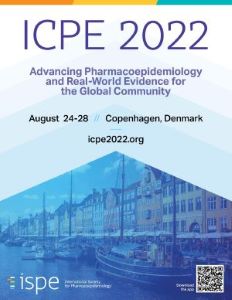Back
Geriatric Pharmacoepidemiology
Poster Session: Poster Session B
(167) Risk of Intrinsic Capacity Decline Associated with Potentially Inappropriate Medications and Polypharmacy in Elderly Patients
Saturday, August 27, 2022
8:00 AM – 6:00 PM CEST
Location: Hall C
Publication Number: 841
Shao-En Weng
– Taipei City Hospital Zhongxing branch, Taipei, TaiwanTai-Yin Wu
– Taipei City Hospital Zhongxing branch, Taiwan (Republic of China)
Presenting Author(s)
Co-Author(s)
Background: Multimorbidity, potentially inappropriate medications, and polypharmacy are common and have been reported to be associated with adverse outcome in elderly. In the past decade, the World Health Organization (WHO) has proposed the Integrated Care for Older People (ICOPE) screening tool to assess the intrinsic capacity (IC), defined as the composite of all physical and mental capacities that an individual can draw upon during his/her life. However, studies on the association between IC, PIM, and polypharmacy are limited.
Objectives: This cross-sectional study aimed to investigate the risk of IC decline associated with PIM and polypharmacy in older adults.
Methods: Eligible study subjects were older adults aged 65 years old and older who attended a community hospital for senior citizens' health examination, completed the WHO ICOPE screening assessment, and finished the survey (for baseline characteristics collection) between March 1 to October 31, 2021. For all study subjects, we calculated their IC score. The IC score ranged from 0 to 6, with a higher score indicating better IC. PIM was defined as if older adults received medications listed in the American Geriatrics Society (AGS) 2019 Beers Criteria. Polypharmacy was defined as the concurrent use of five or more medications by older adults. Multivariable logistic regression models were used to estimate adjusted odds ratios (aORs) and 95% confidence intervals (CIs) of IC decline associated with PIM and polypharmacy.
Results: A total of the 404 older adults (mean age 72 [standard deviation (SD) 6.7] years old and 51% were female) were included in our study. Approximately 66.1% (n=267) of them were with an education level greater than senior high school. The number of medications received per day were 5.4 ± 6.2. Approximately half of them (52.7%) received PIM and one-third of them (35.9%) had polypharmacy. The most commonly prescribed PIM were benzodiazepines and Z-drug (31.9%). The IC score was 4.54 [SD1.1]. The logistic regression models revealed that PIM was associated with a 2.06-fold increased risk of IC decline (aOR 2.06 [95%CI 1.32-3.22]) and polypharmacy was associated with a 2.46 -fold increased risk of IC decline (aOR 2.46 [95%CI 1.57-3.85]).
Conclusions: The prevalence of PIM and polypharmacy is very high among old adults attending a community hospital. Notably, PIM and polypharmacy were associated with increased risk of IC decline.
Objectives: This cross-sectional study aimed to investigate the risk of IC decline associated with PIM and polypharmacy in older adults.
Methods: Eligible study subjects were older adults aged 65 years old and older who attended a community hospital for senior citizens' health examination, completed the WHO ICOPE screening assessment, and finished the survey (for baseline characteristics collection) between March 1 to October 31, 2021. For all study subjects, we calculated their IC score. The IC score ranged from 0 to 6, with a higher score indicating better IC. PIM was defined as if older adults received medications listed in the American Geriatrics Society (AGS) 2019 Beers Criteria. Polypharmacy was defined as the concurrent use of five or more medications by older adults. Multivariable logistic regression models were used to estimate adjusted odds ratios (aORs) and 95% confidence intervals (CIs) of IC decline associated with PIM and polypharmacy.
Results: A total of the 404 older adults (mean age 72 [standard deviation (SD) 6.7] years old and 51% were female) were included in our study. Approximately 66.1% (n=267) of them were with an education level greater than senior high school. The number of medications received per day were 5.4 ± 6.2. Approximately half of them (52.7%) received PIM and one-third of them (35.9%) had polypharmacy. The most commonly prescribed PIM were benzodiazepines and Z-drug (31.9%). The IC score was 4.54 [SD1.1]. The logistic regression models revealed that PIM was associated with a 2.06-fold increased risk of IC decline (aOR 2.06 [95%CI 1.32-3.22]) and polypharmacy was associated with a 2.46 -fold increased risk of IC decline (aOR 2.46 [95%CI 1.57-3.85]).
Conclusions: The prevalence of PIM and polypharmacy is very high among old adults attending a community hospital. Notably, PIM and polypharmacy were associated with increased risk of IC decline.

